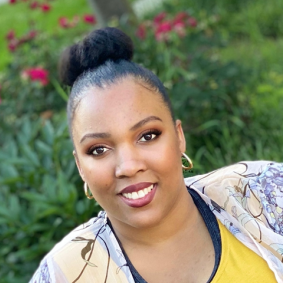Knauss legislative fellowships in Congress help build careers — and they're fun and educational. See our video and fact sheet for details.
Shadaesha Green

Fellowship Institution:
NOAA OAR Climate Program OfficeStart Year:
2021Shadaesha is working as a Communication, Education and Engagement (CEE) division fellow in NOAA’s Climate Program Office. She is a graduate of Hampton University, where she received a B.S. in Marine and Environmental Science and a minor in biology. Shadaesha is currently a Ph.D. student in the Marine, Estuarine, Environmental Science graduate program at the University of Maryland Center for Environmental Science’s Institute of Marine and Environmental Technology. Her dissertation is focused on crustacean physiology and endocrinology using the red deep-sea crab, Chaceon quinquedens, as her species of interest. Specifically, she investigates the reproductive biology of females with an emphasis on characterizing putative hormonal reproductive regulators. She also studies the genetic structure of red deep-sea crab population along the coast of the United States.
In her free time, Shadaesha enjoys spending time with her family, reading, watching movies (binge watching Netflix), and cooking.
Call for Symposium Presenters and Authors
The Chesapeake Rising: Innovative Law and Policy Solutions for Climate Adaptation in Coastal Communities symposium will explore key legal and policy considerations that affect climate adaptation strategies. It provides a unique opportunity for upper-level law students and early-career lawyers to present and publish their legal scholarship.
Program Announcements
-
-
Maryland Sea Grant has program development funds for start-up efforts, graduate student research, or strategic support for emerging areas of research. Apply here.
News and Blogs
Video Gallery
Sea Grant Film Explores a Diminishing Smithville
Smithville is a community on Maryland’s Eastern Shore, on the edge of the Blackwater National Wildlife Refuge. A century ago, Smithville had more than 100 residents. Today, it has four, in two homes: an elderly couple, and one elderly woman and her son, who cares for her.
Featured Fellow
Featured Research Project
Developing a habitat model for mysids, an important link in Chesapeake Bay food webs
Mysids are important mesozooplankton prey for many species of fish in Chesapeake Bay and are an important link in transferring energy from lower to upper trophic levels. Mysids also serve as biological vectors for benthic-pelagic coupling due to their diel vertical migration and omnivorous prey-switching behavior, which makes mysids important regulators of food web architecture. Despite their central role in coastal food webs, surprisingly little is known about mysid ecology and dynamics in Chesapeake Bay.
The Blue Crab: Callinectes Sapidus
An essential resource for researchers, students, and managers. Get your copy today!


©2025 Maryland Sea Grant. All rights reserved.
5825 University Research Court, Suite 1350 | College Park, MD 20740
Phone: (301) 405-7500 | Fax: (301) 314-5780 | Contact Us



